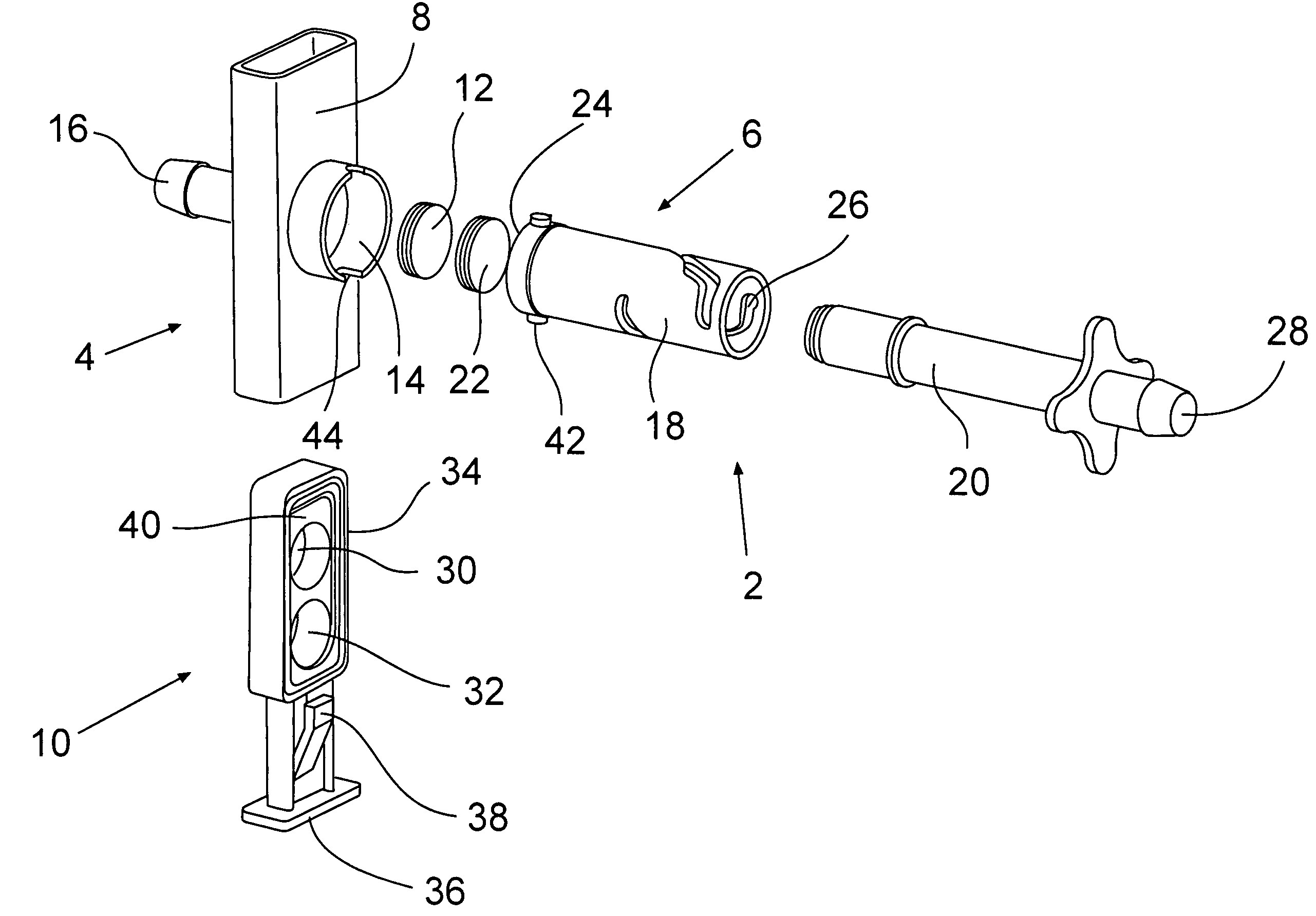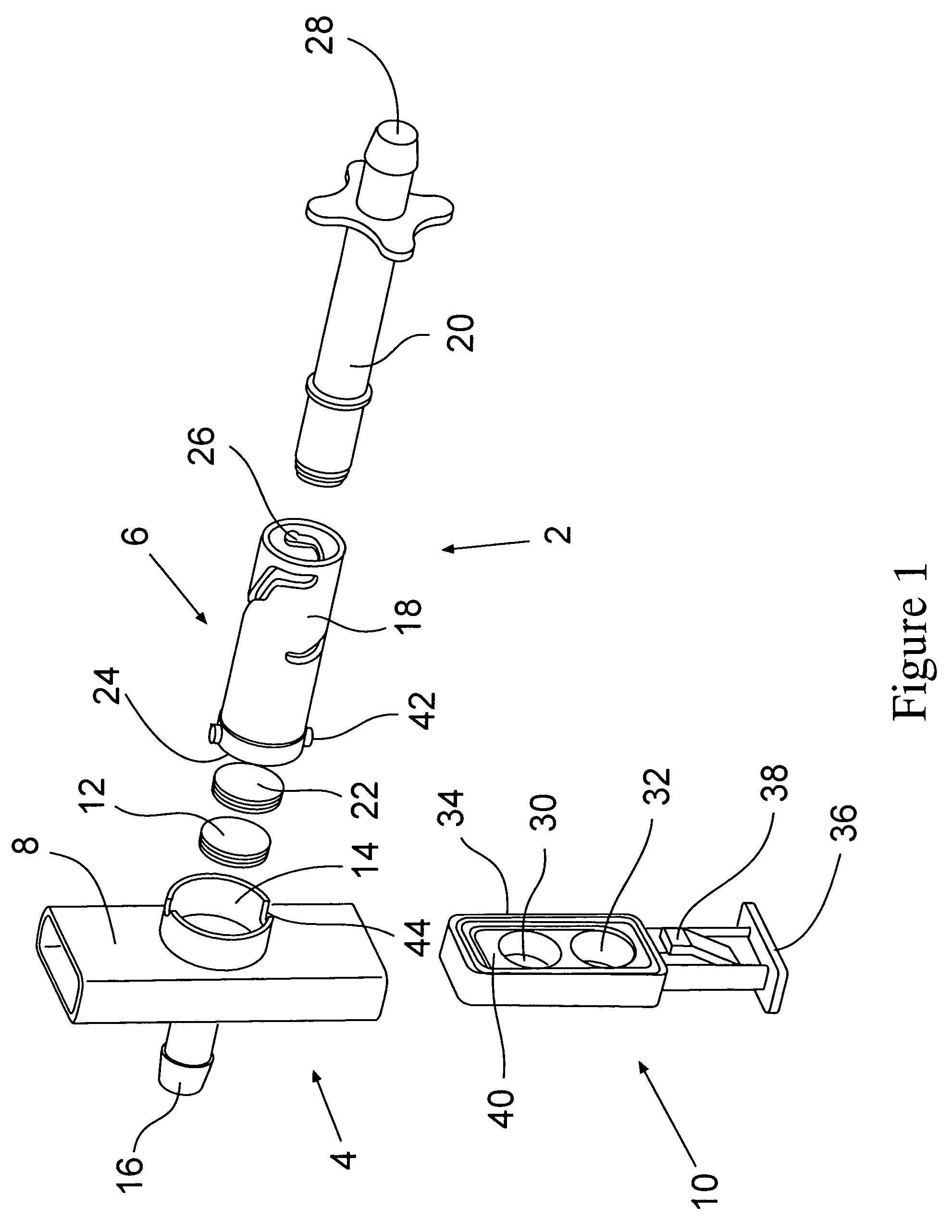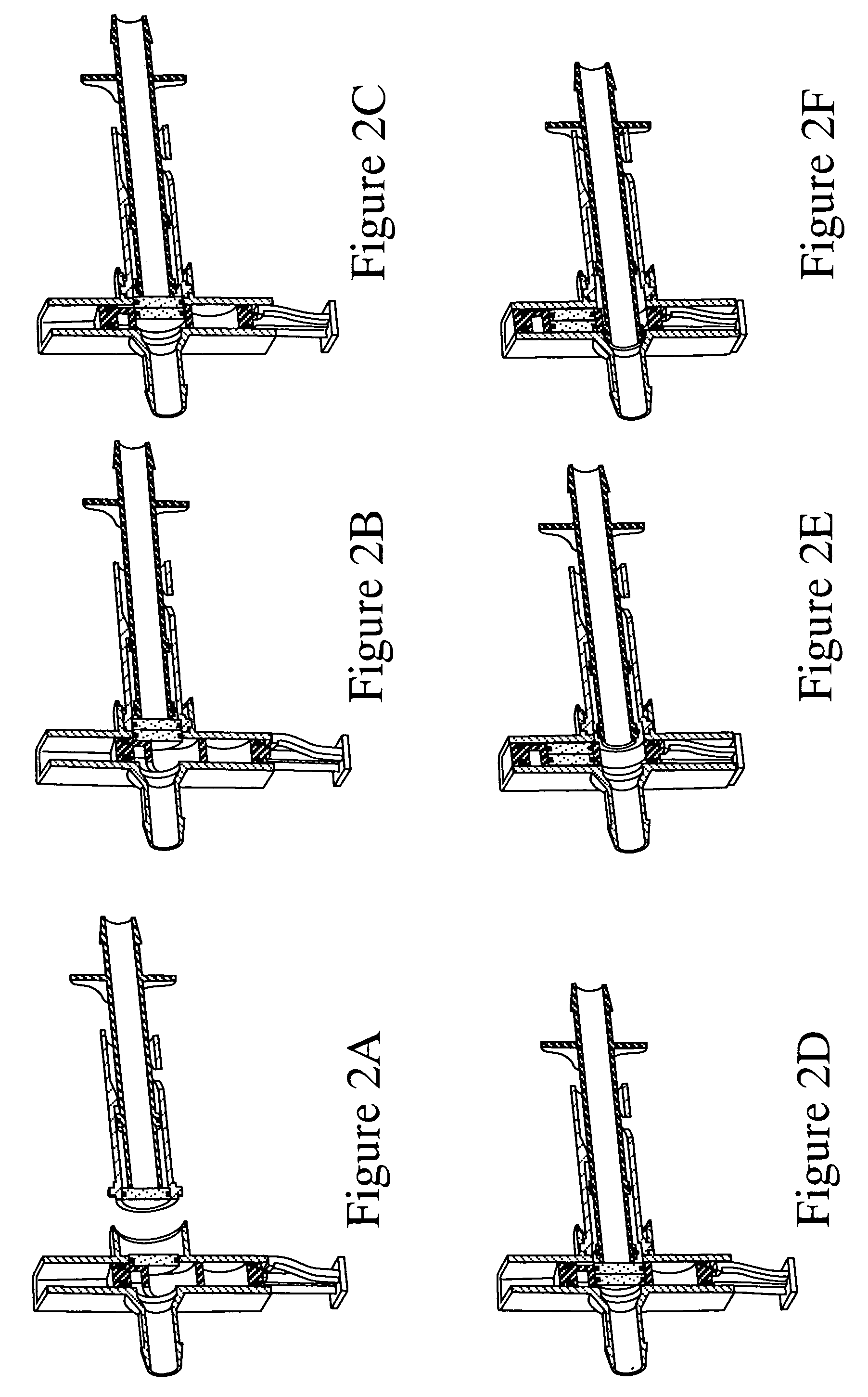Sterile connector
a connector and connector technology, applied in the field of sterile connectors, can solve the problems of increasing the risk of contamination of the entire system, not always possible, and using steam,
- Summary
- Abstract
- Description
- Claims
- Application Information
AI Technical Summary
Benefits of technology
Problems solved by technology
Method used
Image
Examples
Embodiment Construction
[0031]FIG. 1 shows a first embodiment of the present invention. In this embodiment one sees the two basic components a device 2 of the present invention, the connector 4 and the coupling device 6. The connector is formed of three components, a body 8, a movable port 10 and a sterile barrier plug 12. The connector in this embodiment also has a first opening 14 that is sealed by the sterile barrier plug 12 when the device is in a closed position and a second opening 16, in this embodiment in the form of a barbed connector that is connected to another sterile component (not shown).
[0032]The other basic component of the device 2 is the coupling device 6. It is formed of a body 18 a movable stem 20 contained within a portion of the body 18 and a sterile barrier plug 22 located in a first opening 24 of the coupling device. The stem 20 is contained within the second opening 26 of the coupling body. The stem 20 also has an opening 28 extending outwardly from the second opening 26 of the cou...
PUM
 Login to View More
Login to View More Abstract
Description
Claims
Application Information
 Login to View More
Login to View More - R&D
- Intellectual Property
- Life Sciences
- Materials
- Tech Scout
- Unparalleled Data Quality
- Higher Quality Content
- 60% Fewer Hallucinations
Browse by: Latest US Patents, China's latest patents, Technical Efficacy Thesaurus, Application Domain, Technology Topic, Popular Technical Reports.
© 2025 PatSnap. All rights reserved.Legal|Privacy policy|Modern Slavery Act Transparency Statement|Sitemap|About US| Contact US: help@patsnap.com



